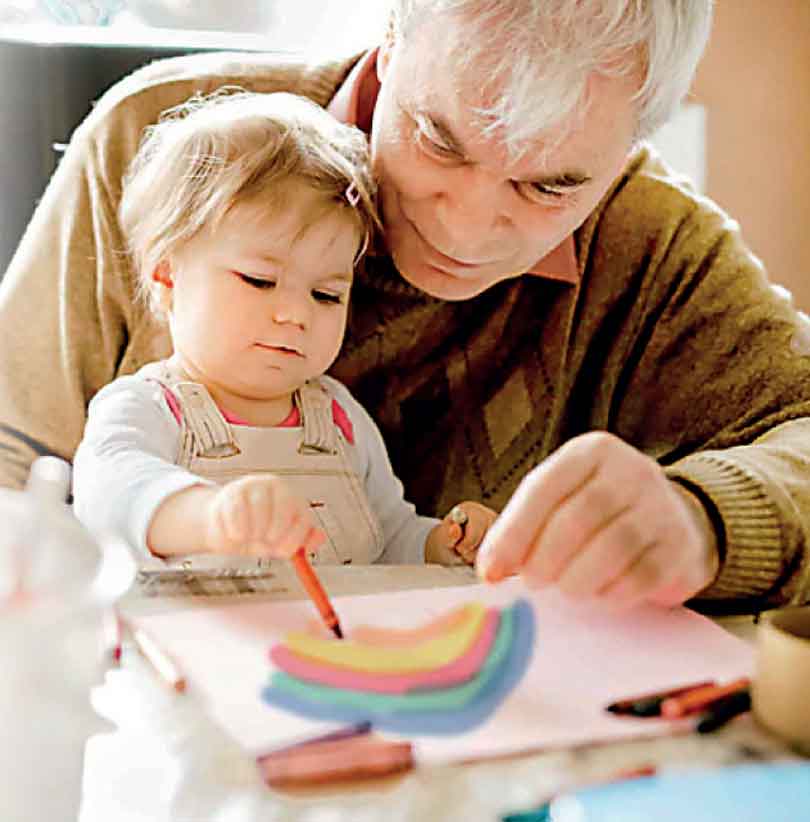Sunday Oct 26, 2025
Sunday Oct 26, 2025
Thursday, 2 October 2025 14:30 - - {{hitsCtrl.values.hits}}

In every society, two groups need the most care and protection—children and elders. They are at opposite ends of life’s journey, yet they share similar vulnerabilities. Both depend on the love, guidance, and responsibility of families and communities. Strengthening protection for these two groups does not require separate systems; instead, it calls for an intergenerational approach where both are valued, respected, and supported together.
Shared Vulnerabilities, Shared Responsibilities
Children need protection from neglect, abuse, exploitation, and harmful influences—both online and offline. Similarly, elders often face abandonment, financial insecurity, loneliness, and emotional neglect. What is common is their dependence on others for safety, dignity, and wellbeing. Societies that care for children while ignoring elders, or vice versa, miss the bigger picture. True compassion requires creating systems where both generations feel seen and secure.
The Family as the First Shield of Protection
Families are the first line of defence for both age groups. Children rely on parents and guardians for guidance, affection, education, and safety. Elders rely on family members for emotional support, caregiving, mobility, and medical assistance. When families are strong, both children and elders thrive. When families are under stress—from migration, financial difficulties, or work pressures—neglect can occur unintentionally.
Sharing responsibility within families helps prevent burnout. Older grandparents can play active roles in childcare, storytelling, and passing on values, while adults ensure elders receive proper healthcare, companionship, and respect. This exchange builds mutual trust and reduces feelings of isolation.
Intergenerational Bonds as a Protective Force
One of the most effective ways to protect both children and elders is by strengthening intergenerational relationships. When children grow up with engaged grandparents or older relatives, they learn empathy, respect, culture, and history. Elders, in turn, feel needed, valued, and mentally active.
Simple interactions—reading together, doing homework with grandparents, gardening, or sharing traditional games—can improve emotional wellbeing for both. Research shows that children who grow up close to elders develop stronger emotional intelligence, while elders who interact with young people experience less loneliness and sharper memory.
Communities as a Second Home
Beyond families, communities also play a crucial role in protecting children and elders. Community centres, religious institutions, schools, and local organisations can create programmes that bring these generations together. Intergenerational clubs, neighbourhood care teams, and social events can reduce isolation and offer safe spaces for learning and companionship.
Local volunteers can visit elders living alone, while youth groups can assist with errands, technology, or home needs. Likewise, community childcare programmes or safe play areas can reduce risks for children whose parents are working.
Health and Mental Wellbeing
Protection is not limited to physical safety—it also includes mental and emotional health. Children today face rising stress from school pressure, bullying, technology overuse, and social comparison. Elders often struggle with depression, memory issues, loneliness, or limited mobility. Supporting both groups requires accessible mental health services, regular check-ins, and open communication.
Listening to children when they express fear or discomfort, and giving elders the confidence to ask for help, are essential steps in creating a supportive environment.
Policy, Law, and Social Care
Governments also have a duty to protect both generations. Child protection laws, digital safety regulations, helplines, and school safeguards help prevent abuse and neglect. Similarly, policies on elder rights, pensions, caregiving support, and healthcare access ensure seniors are not forgotten.
However, policies should not treat these groups separately. Integrated care systems—where childcare services, elder support, and family welfare programmes work together—have far greater impact. Encouraging flexible work arrangements allows caregivers to look after both their children and ageing parents without financial fear.
Technology as a Tool for Safety
Technology, when used responsibly, can protect both elders and children. Video calls help families stay connected across distances. GPS trackers and emergency alert systems can assist elders with mobility or health concerns. Parental controls and digital literacy programmes protect children from online threats.
At the same time, teaching elders how to use smartphones and internet tools empowers them to stay connected and reduces isolation. Children can even help elders learn technology, creating meaningful collaboration.
A Culture of Care and Respect
Ultimately, the greatest protection comes from mindset. Children should be taught from a young age that elders deserve gratitude and respect, not inconvenience or neglect. Similarly, elders should be encouraged to share time, wisdom, and kindness with children. When both feel valued, families grow stronger and communities become more compassionate.
Moving Forward Together
Protecting one generation should never come at the cost of the other. By building systems that support both children and elders—within families, communities, and national policies—we create a society that honours life at every stage. Their needs may be different, but their right to safety, love, and dignity is the same.
A nation that cares equally for its youngest and oldest members shapes a kinder, more resilient future—one where protection is not a duty, but a shared promise across generations.